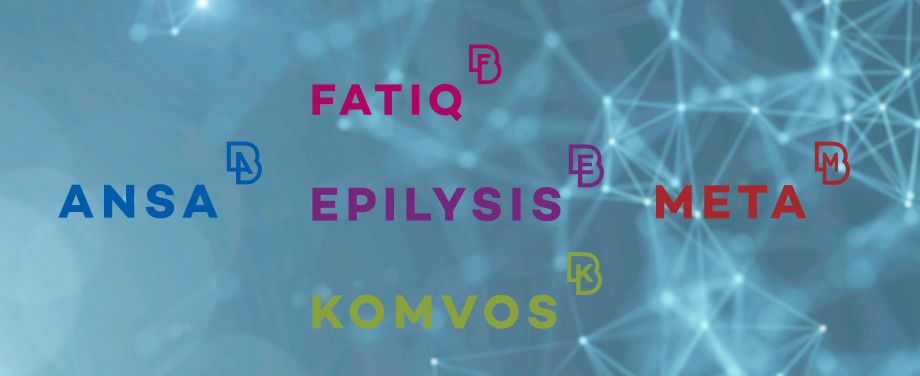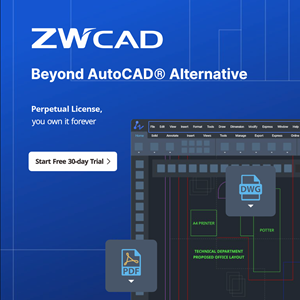LUCERNE, Switzerland, Jan 3, 2024 – Just a few months after the successful launch of v24.0.0, v24.1.0 comes to offer an upgrade in the newly established implementations of the v24.x.x series, and also introduce new innovative additions, up to date with the latest trends and needs in the industry.

As the release of v24.1.0 refers to ANSA, EPILYSIS, META, KOMVOS and FATIQ, working in an integrated, all-in-one environment with our innovative solutions aims to increase team-productivity and collaboration.
Do not miss:
- The revolutionary implementations in eXtended Reality, such as the Human Body Articulation within ANSA VR .
- The advanced algorithm of Hybrid mesh on casted parts.
- The enhanced Layers generation for CFD analysis, with new options and improved smooth transition.
- The abundance of new features for Contact analysis in EPILYSIS.
- The extended implementations in NVH for post-processing, among which the export of Transfer Functions as FMU.
- The sophisticated algorithmic simulations and photorealistic visualizations of the SPH Solver.
- The unified DM functionality in ANSA, META and KOMVOS, offering report overview from Key Results stored in DM.
- The central management of application settings in KOMVOS, straight from the main DM library.
- The enriched calculation methods for Spot-weld fatigue analysis in FATIQ.
Release Highlights
Combatting model complexity with ANSA
Significant enhancements in model reduction have taken place in v24.1.0, among which the creation of Display Models and Reduced Models directly from Subsystems within the Model Browser, as part of the new Build Process. Coupled with Data Management that has also undergone significant upgrades, Simulation Runs and all their contents can now be recursively deleted through a single operation, provided that they are not used by other DM objects. Moreover, data can now be transferred between DMs with improved robustness and performance with the optimized “Send to DM” functionality.
Sophisticated Meshing algorithms have been introduced in the new release: Automatic identification and fix of intersecting solid structural mesh and on demand creation of compatible mesh on interface areas, as well as Hybrid mesh on casted parts. This Hybrid mesh functionality is coupled the with automatic identification of thick areas and the middle mesh on thin and solid structural mesh on thick areas, hence, leading to top-notch results, coupled with efficiency, and minimized turnaround time.
In a similar manner, placing the focus on CFD, advanced implementations in Layers generation allow for the improved smooth transition between wall function and y+ =1 areas, whereas new options have been added for radially varying first layer height.
In the area of Durability, the implementation of fracture mechanics for Abaqus enables the enriched feature definition for crack propagation simulations with XFEM for shell and solid models. Regarding Composites, Lattice, Porous and Honeycomb RVE FE models can be easily created, set up and homogenized through the RVE Generator.
As VR and AR implementations have been paving the way to XR, Human Body Model Articulation can now also take place in VR, offering positioning of a Human Body Model (HBM), visibility control over layers such as skin, flesh, skeleton, muscles, etc., along with penetration checks.
Closing with User Productivity, the new version is enriched with the power for multiple job submission, executing, monitoring, and controlling in a single window. Other implementations cover the ADVENTURECluster Solver pre-processing interface, for full model setup. This includes boundary and loading conditions, contacts, and analysis type for linear and nonlinear structural and thermal analysis. It is also now possible to automatically translate Abaqus models to EPILYSIS/Nastran and direct submit Abaqus load cases to EPILYSIS.
Significant enhancements in EPILYSIS
The most representative developments in EPILYSIS refer to the calculation of structural intensity flow for transient response for all element types, as well as the support of Modal Participation Factors for MFREQ with AMLS.
Advanced multidisciplinary post-processing in META
Post-processing for CFD analysis has gained significant ground with the implementation of high-quality Cut Planes for models with high order elements, increasing the resolution on high order meshes by cell subdivision. Furthermore, the Interactive Path editing, and Plot update allow for modifications of a Parametric Point Path in real time and automatic synchronization with the associated 2D Plot.
In the field of NVH, the export of Transfer Functions as FMU via Modal Parameter Estimation tool has now become a reality, along with full calculation of the unknown subsystem’s Transfer Functions from the full assembly Transfer Functions.
Other discipline-oriented implementations refer to Durability, with the calculation of Abaqus cyclic symmetry deformation results for the whole structure, as well as to Crash and Safety, with the Far Side Virtual Testing Crashworthiness (VTC) .
The new release has also much to offer in the domain of Data Management, composing single and comparison reports, filling presentations templates with values, images, tables stored in Data Management system and significant performance improvements when retrieving data from ASAM-ODS servers.
Furthermore, selected highlights of User Productivity implementations cover the customization of the context menus of 2D Plots, Curves and Axes and the ability to export 3D model and results to Universal Scene Description (USD) format.
Leveraging user experience with KOMVOS
A new KOMVOS Launcher facilitates the retrieval of application settings straight from the central DM Library, along with quick isolation of only data of interest throughout the Database Browser, without the need of specifying any filters.
Moreover, focusing on DM functionality, Subsystem-level Reports enable the storage of validation run under the respective Subsystem and users can compose single / comparison reports filling presentations templates with values, images, tables stored in Data Management system.
Enhanced calculation methods with FATIQ
The new release comes with upgraded FATIQ implementations regarding the analysis for fatigue life estimation of spot-welds. In specific, a dedicated Connection Manager allows for easy definition of spot-welds and automatic recognition from FE results, along with assignment rules for automated material definition on spot-welds.
For more details about the new software features, enhancements and corrections please, refer to the Release Notes document.
New Documentation in ANSA
Reference Manuals
- SPH solver reference manual
- SPH solver verification manual
Tutorials
- SPH simulation of water inflow into a reservoir tank
- SPH simulation of a gearbox lubrication with one-way coupling
- SPH simulation of water wading with two-way coupling
New Documentation in ΜΕΤΑ
User Guides
- Directivity plot Toolbar user guide
- Virtual testing crashworthiness Toolbar user guide
Documentation in FATIQ
- User Guides
- FATIQ theory manual
For more details about the new software features, enhancements and corrections please, refer to the Release Notes document.
Compatibility and Supported Platforms
- ANSA files saved by all the first and second point releases of a major version are compatible to each other. New major versions can read files saved by previous ones but not vice versa.
- META Project files saved from version 24.1.0 are compatible and can be opened by META version 16.0.0 or later.
- Support for Windows 7 has been discontinued.
- Support for Red Hat 6, and other Red Hat 6 compatible Linux distributions has been discontinued.
- Support for Mac OS has been discontinued.
- Support for 32-bit platform has been discontinued for all operating systems.
Download
Where to download from
- Customers who are served directly by BETA CAE Systems, or its subsidiaries, may download the new software, examples and documentation from their account on our server. They can access their account through the “sign in” link at our web site.
- Contact us if you miss your account details. The Downloads menu items give you access to the public downloads.
- Customers who are served by a local business agent should contact the local support channel for software distribution details.
What to download
All files required for the installation of this version reside in the folders named “BETA_CAE_Systems_v24.1.0”, “KOMVOS_v24.1.0”, and “FATIQ_v24.1.0” and are dated as of December 28, 2023.These files should replace any pre-releases or other files downloaded prior to that date.
The distribution of this version of our pre- and post-processing suite is packaged in one, single, unified installation file, that invokes the respective installer and guides the procedure for the installation of the required components.
For the installation of the software on each platform type, download from the respective folders, the .sh file for Linux or the .msi file for Windows.
In addition to the above, optionally, the META Viewer is available to be downloaded for each supported platform.
The tutorials and the example files reside in the folder named “TUTORIALS”. This folder includes the complete package of the tutorials and example files, and a package with only the updated ones.
The Abaqus libraries required for the post-processing of Abaqus .odb files are included in the installation package and can be optionally unpacked.
Earlier software releases are also available in the sub-directory called “Previous_Versions” or in a folder named after the product and version number.
About BETA CAE Systems
BETA CAE Systems is a private engineering software company committed to the development of state of the art CAE software systems that meet the requirements of all simulation disciplines. The company’s products, the ANSA pre-processor/ EPILYSIS solver and META post-processor suite, and SPDRM, the simulation-process-data-and-resources manager, hold a worldwide leading position across a range of industries, including the automotive, railway vehicles, aerospace, motorsports, chemical processes engineering, energy, electronics, heavy machinery, power tools, and biomechanics.
Committed to its mission to produce best-in-class CAE software systems, BETA CAE Systems offers products that consistently exceed expectations and provides exemplary technical support to its customers. The company’s continuously growth attest to the high level of customer satisfaction and user confidence. For more information, visit http://www.beta-cae.com.






